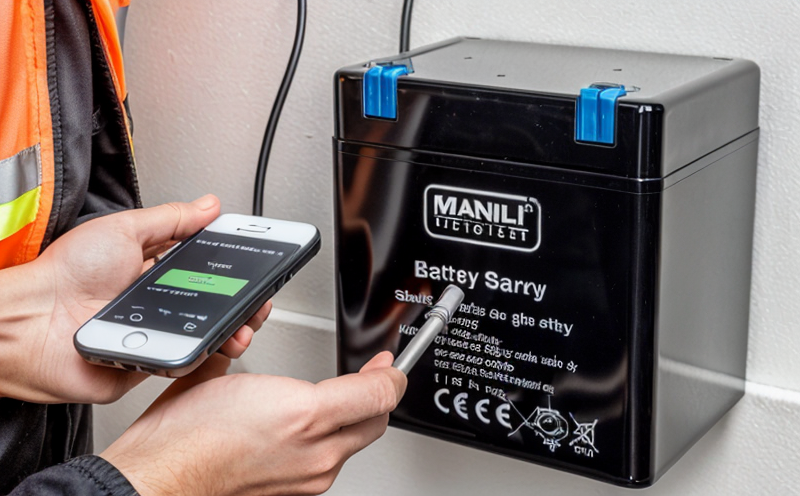Battery Safety During Storage: Understanding the Risks and Best Practices
As battery technology continues to advance, so do the risks associated with improper storage and handling of these potentially hazardous devices. Batteries are an essential component in many electronic devices, from smartphones and laptops to electric vehicles and renewable energy systems. However, when not handled or stored properly, batteries can become a fire hazard, leading to property damage, injury, or even loss of life.
Proper storage and handling of batteries require attention to detail and adherence to established guidelines. In this article, we will delve into the importance of battery safety during storage, highlighting key considerations and best practices for minimizing risks associated with these devices.
Understanding Battery Chemistry
Batteries come in various chemistries, each with its unique characteristics and potential hazards. Some common types include:
Lithium-ion (Li-ion) batteries: These are the most widely used type of rechargeable battery, powering many portable electronic devices.
Lead-acid batteries: Commonly used in vehicles and backup power systems.
Nickel-cadmium (Ni-Cd) batteries: Used in some older appliances and tools.
Each battery chemistry has specific storage requirements to prevent damage or catastrophic failure. For instance:
Li-ion batteries require a charge level between 20 and 80 to prevent over-discharge, which can cause irreparable damage.
Lead-acid batteries should be stored with the positive terminal facing upwards to prevent acid spills.
Storage Best Practices
To ensure safe storage of batteries, consider the following guidelines:
Keep batteries away from heat sources: Heat can accelerate chemical reactions within the battery, leading to over-heating and potential fire.
Store batteries in a well-ventilated area: Preventing accumulation of gases released by the battery during charging or discharging.
Maintain proper charge levels: Avoid deep discharge or full charge, as this can cause irreversible damage.
Detailed Storage Considerations for Lithium-Ion Batteries
Charge Level:
Do not store Li-ion batteries at 0 charge (completely discharged).
Keep the battery level between 20 and 80.
Avoid storing batteries with a full charge (100) for extended periods.
Environmental Conditions:
Store in a cool, dry place (avoid temperatures above 35C/95F or below -10C/14F).
Maintain humidity levels between 40 and 60.
Handling and Packaging:
Handle batteries with care to avoid physical damage.
Use protective packaging materials to prevent accidental discharge.
Detailed Storage Considerations for Lead-Acid Batteries
Charge Level:
Avoid storing lead-acid batteries at 0 charge (completely discharged).
Maintain a moderate charge level between 50 and 80.
Do not store batteries with a full charge (100) for extended periods.
Environmental Conditions:
Store in a cool, dry place (avoid temperatures above 35C/95F or below -10C/14F).
Maintain humidity levels between 40 and 60.
QA Section
Q1: What should I do if I notice swelling of the battery during storage?
A: If you observe a Li-ion battery swelling, unplug it immediately from any charging equipment. The battery may still be usable, but consult a professional for assessment and disposal.
Q2: How often should I inspect batteries stored in a warehouse or facility?
A: Regularly inspect batteries (every 3-6 months) to ensure they are not damaged or compromised. Check for signs of leakage, corrosion, or physical damage.
Q3: Can I store nickel-cadmium (Ni-Cd) batteries the same way as lithium-ion batteries?
A: No. Ni-Cd batteries have different storage requirements. Follow the manufacturers guidelines and maintain a separate storage area to prevent cross-contamination with other battery types.
Q4: What should I do if a battery is exposed to water during storage?
A: If a battery comes into contact with water, immediately remove it from any charging equipment and unplug all connections. Do not attempt to use the battery, as this can lead to short circuits or electrical shock.
Q5: Can I mix different types of batteries (e.g., lithium-ion and lead-acid) in the same storage area?
A: No. Different battery chemistries have unique properties and storage requirements. Store each type separately to prevent cross-contamination, damage, or fires.
Q6: How long can a battery be stored without being used?
A: The shelf life of batteries varies depending on the chemistry and storage conditions. Generally:
Li-ion batteries: 1-2 years
Lead-acid batteries: 3-5 years
Always consult the manufacturers guidelines for specific recommendations.
Q7: What are some common mistakes when storing batteries?
A: Common errors include:
Leaving batteries in a fully charged or completely discharged state.
Storing batteries near heat sources (e.g., radiators, heaters).
Mixing different battery chemistries in the same storage area.
Not inspecting batteries regularly for signs of damage or leakage.
To minimize risks and ensure safe storage of batteries, follow the guidelines outlined above. Proper handling, storage, and regular inspections can help prevent accidents and extend the lifespan of these critical devices.

































